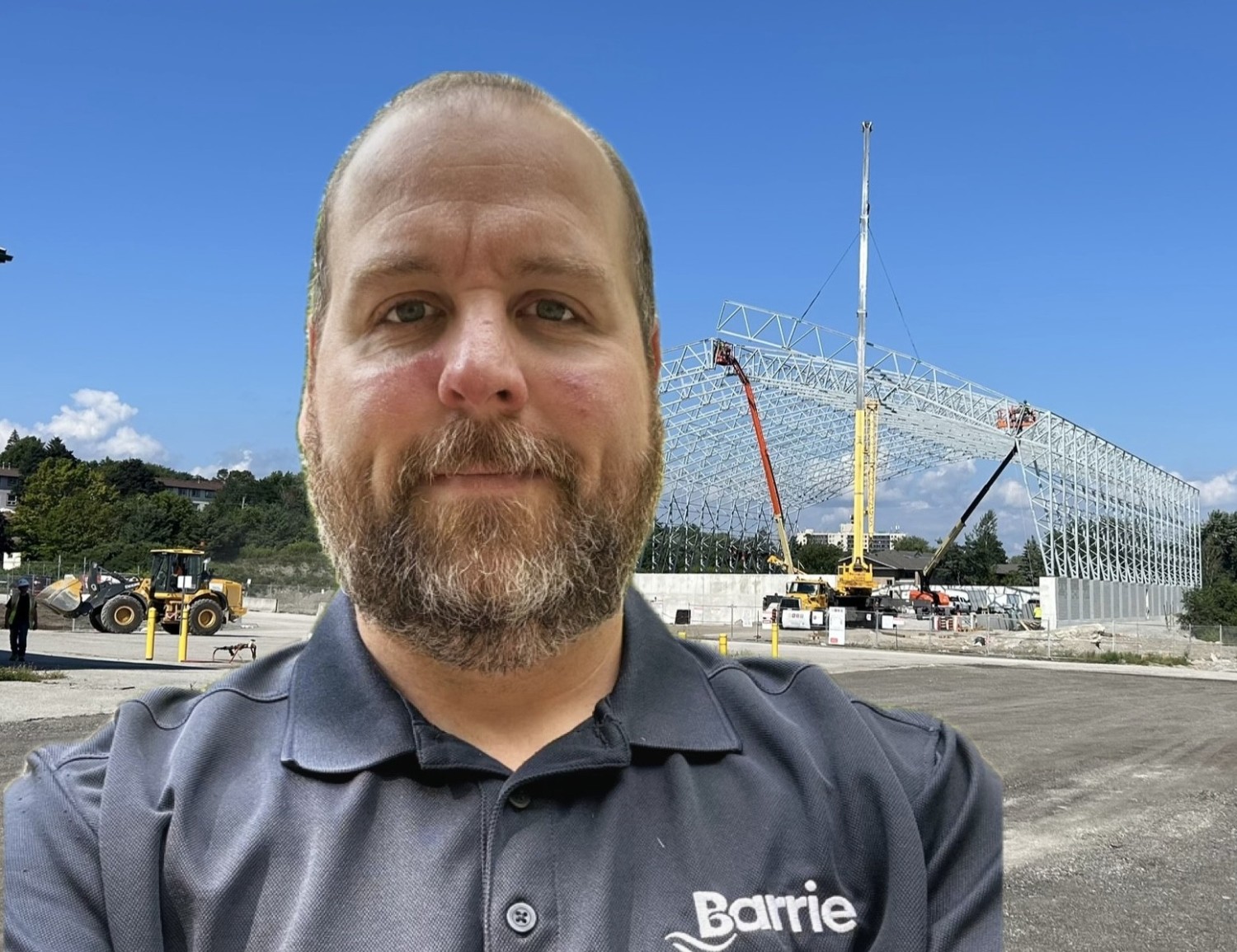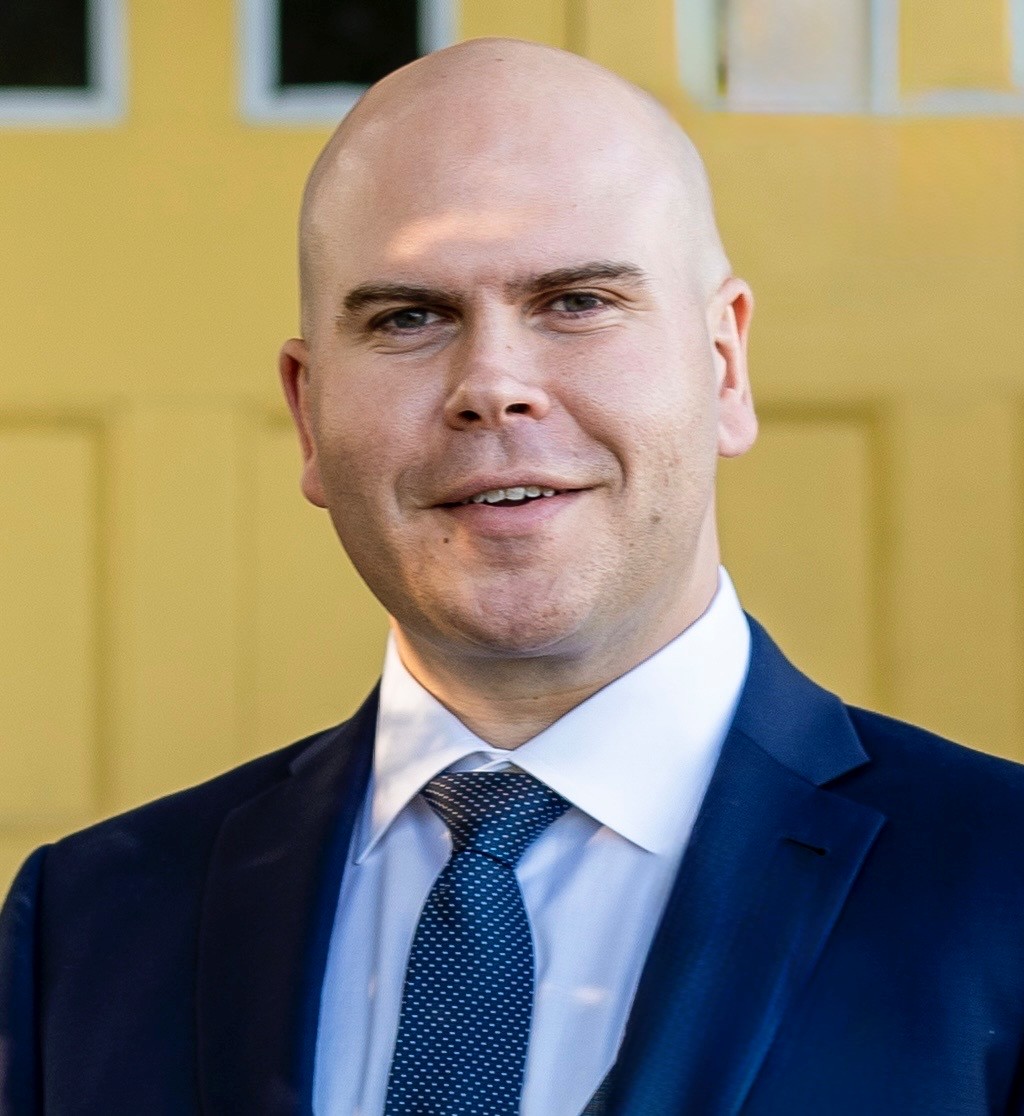Speakers

Dan Gardner - Keynote Speaker
Author, speaker, consultant, and freelancer

Cole Webber - Keynote Speaker
Inventor
Betterfit
https://www.linkedin.com/in/cole-webber-510a641b1/
https://colewebber.com/speaking/
Integrating with Uncertainty
What happens when the materials we need to build are subject to the whims of foreign policy? When and world trade markets evolve daily? Canada faces mounting pressure to rethink both its dependency on foreign building components, and the way we design and build –– from the ground up. Cole's talk explores emerging strategies for decoupling supply chains, spurring domestic construction innovation, and capitalizing on emerging technology to building a more self-reliant and responsive construction economy. Cole explores how we can build a construction ecosystem capable of resiliency without compromising on scale or affordability.

Ritu Ahuja
Director of Lean Integration and IPDA Board Member
Kinetic Construction Ltd.
Currently working as the Director of Lean Integration with Kinetic Construction, Ritu Ahuja has been advancing the Lean mindset in the AEC industry for over 15 years. She is an experienced lean coach, teacher, facilitator, and implementer who passionately works with the project teams and people at all levels of the organization to achieve desired goals. As a part of her role at Kinetic, Ritu oversees the adoption of lean program including BIM/VDC and Built-In-Quality. She has been the recipient of the VRCA 2022 Education Leadership Award for her contributions to the existing knowledge of Lean design and construction in the AEC industry. She is a board member at the Lean Design and Construction Canada (LDCC) and the Integrated Project Delivery Alliance (IPDA) and continues to mentor the Vancouver and Vancouver Island Lean Community of Practice (Lean CoP).
https://www.linkedin.com/in/ritu-ahuja/
Lighting the Way: Comparing Firehall Projects to Reveal the Power of IPD
This presentation will present the comparison between three firehall projects completed using three different project delivery methods. The conclusion and key takeaways will highlight the benefits of using Integrated Project Delivery over the traditional delivery methods. This presentation will use project metric to compare the three projects, discuss the real challenges faced and the real tangible results obtained. This presentation will help to elevate the trust in IPD method by showcasing the tangible benefits of adopting IPD over other project delivery methods.
LDCC – Last Planner System®

Bruce Vasarhely
Vancouver Branch Manager
Kinetic Construction Ltd.
https://www.linkedin.com/in/bruce-vasarhely-48882b51/
Lighting the Way: Comparing Firehall Projects to Reveal the Power of IPD
This presentation will present the comparison between three firehall projects completed using three different project delivery methods. The conclusion and key takeaways will highlight the benefits of using Integrated Project Delivery over the traditional delivery methods. This presentation will use project metric to compare the three projects, discuss the real challenges faced and the real tangible results obtained. This presentation will help to elevate the trust in IPD method by showcasing the tangible benefits of adopting IPD over other project delivery methods.

Chris Kailing
Principal, OAA, NSAA, SAA, MRAIC, AIA, NCARB
Group2 Architecture Interior Design
Chris boasts over 23 years of Architectural experience in both Canada and the United States. he has worked on a diverse range of project types at various scales. Since 2015 he has been a team member on 6 IPD projects and provided advisory support on a 7th. His early experience as a PIT captain started in the Prairies. In the last 5 years he has transitioned to a leadership role as PMT member for IPD projects in Ontario and Atlantic Canada. His experience has given him a deep understanding of the various IPD Contracts utilized in North America and the important role PMT plays in the IPD framework. Chris lives in Ottawa with his wife and son
https://www.linkedin.com/in/christopher-kailing-66b2422/
Inside the PMT: What every Owner, Contractor and Consultant should know.
IPD projects have a unique governance structure that includes SMT (Senior Management Team), PMT (Project Management Team) and PITs (Project implementation Teams).
The PMT has the operational responsibility for delivering the project. We will focus on this important project role and provide perspective from the Owner, Consultant, Contractor and Trades.
Experienced PMT members will present on the following key topics:
• Leadership skills
• Collaborative decision making
• Project administration
• Innovative problem solving
Whether you're new to PMT or looking to improve your team’s effectiveness, this session, presented by Real PMT Members, will go through Real Challenges faced on IPD Projects and the actionable

Ryan Jones
Senior Capital Project Manager, PMP
City of Barrie
Ryan is a passionate building partner with over 15 years' experience in the construction and municipal sectors. Ryan is adept at guiding large teams of Project Managers and Technical Specialists to deliver complex infrastructure initiatives. At the City of Barrie, Ryan leads several skilled teams managing large-scale facility development and renewal project, balancing technical acumen with strategic thinking, collaboration and strong leadership to deliver a wide variety of both traditional and integrated projects delivery models. Ryan has been a team member on 3 IPD Projects in a variety of roles including PMT Owner’s Lead, PIT participant and has experience in all facets of an IPD project. His most recent experience as the Owner’s PMT representative from start to finish, allowed him to develop the project from an initial concept, through Validation, facilitate a Big Room of 30+ team members and collaborate with 4 other individuals at the PMT level to develop, guide, and govern a multi-phase $36M project to successful completion.
Ryan currently resides about an hour north of the GTA with his wife, daughter, son and dog – Blue.
https://www.linkedin.com/in/ryan-jones-b6019345/
Inside the PMT: What every Owner, Contractor and Consultant should know.
IPD projects have a unique governance structure that includes SMT (Senior Management Team), PMT (Project Management Team) and PITs (Project implementation Teams).
The PMT has the operational responsibility for delivering the project. We will focus on this important project role and provide perspective from the Owner, Consultant, Contractor and Trades.
Experienced PMT members will present on the following key topics:
• Leadership skills
• Collaborative decision making
• Project administration
• Innovative problem solving
Whether you're new to PMT or looking to improve your team’s effectiveness, this session, presented by Real PMT Members, will go through Real Challenges faced on IPD Projects and the actionable

Maria Williams
Senior Bid Manager
Pomerleau
Maria has over 22 years of experience in commercial construction and is currently part of the Pomerleau Alternative Project Centre of Expertise (APEX) team, which oversees all collaborative contract models.
Maria brings her expertise on previous contract models, and experience on multiple IPD PMTs, to every project to assist the integrated team in utilizing and implementing Lean concepts throughout the design and construction processes. Her experience on IPD PMTs, PITs and as a GC in various roles including operations, procurement, estimating, and as a superintendent provide her with a perspective that allows her to build strong relationships and provide innovative solutions.
Maria holds two Bachelor of Science Degrees in both Civil and Architectural Engineering. Maria has also completed the IPDA certificate course.
She currently lives in the Greater Toronto Area with her husband and four children.
https://www.linkedin.com/in/maria-williams-9141421/
Inside the PMT: What every Owner, Contractor and Consultant should know.
IPD projects have a unique governance structure that includes SMT (Senior Management Team), PMT (Project Management Team) and PITs (Project implementation Teams).
The PMT has the operational responsibility for delivering the project. We will focus on this important project role and provide perspective from the Owner, Consultant, Contractor and Trades.
Experienced PMT members will present on the following key topics:
• Leadership skills
• Collaborative decision making
• Project administration
• Innovative problem solving
Whether you're new to PMT or looking to improve your team’s effectiveness, this session, presented by Real PMT Members, will go through Real Challenges faced on IPD Projects and the actionable

Thomas McBey
Senior Project Manager, P.Eng
Kelson Mechanical Inc
Known for his strategic oversight and collaborative leadership, Thomas has successfully delivered complex projects through a wide variety of project delivery models across healthcare, institutional, commercial and industrial sectors in over 13 years with Kelson. Through his experience as a PMT representative, PIT Captain, and Trade Partner on multiple IPD projects, Thomas specializes in resolving multidisciplinary design discrepancies, optimizing workforce and resource planning, and driving lean construction practices. With a commitment to innovation and excellence, Thomas continues to lead projects that shape communities and elevate industry standards. He holds a Bachelor of Science in Mechanical Engineering from Queen’s University and is certified in a wide range of technical and leadership disciplines, including construction scheduling, HVAC systems design, and transformational leadership. Thomas lives just outside of the GTA with his wife and three sons
https://www.linkedin.com/in/thomasmcbey/
Inside the PMT: What every Owner, Contractor and Consultant should know.
IPD projects have a unique governance structure that includes SMT (Senior Management Team), PMT (Project Management Team) and PITs (Project implementation Teams).
The PMT has the operational responsibility for delivering the project. We will focus on this important project role and provide perspective from the Owner, Consultant, Contractor and Trades.
Experienced PMT members will present on the following key topics:
• Leadership skills
• Collaborative decision making
• Project administration
• Innovative problem solving
Whether you're new to PMT or looking to improve your team’s effectiveness, this session, presented by Real PMT Members, will go through Real Challenges faced on IPD Projects and the actionable

Bill Lett
Managing Principal - B.Arch, OAA, FRAIC, LEED AP
Unity Design Studio
With over 25 years of experience leading complex projects, Bill Lett is a registered architect in Ontario and was inducted into the College of Fellows of the Royal Architectural Institute of Canada in 2018. He holds memberships in multiple organizations, from local to national levels, and has served on numerous boards and committees related to design and construction across North America. Bill has extensive hands-on experience working with diverse stakeholders, administrators, planning processes, municipal/regional councils, and government agencies. He has led the design of major municipal, cultural, healthcare, and institutional projects across Ontario. He is passionate about integrating buildings into the fabric of a community and is committed to changing how projects are delivered by adopting more collaborative models throughout the design and construction process.
https://www.linkedin.com/in/william-lett-54282316
More Gym, Less Panic: How Major Scope was Added Mid-Stream at the Kitchener Indoor Recreation Complex
Midway through the delivery of the Kitchener Indoor Recreation Complex, the City of Kitchener secured over $22 million in new federal and provincial funding, prompting a bold expansion of scope: a 33,800 sq ft quad-gymnasium. Thanks to the project’s Integrated Project Delivery (IPD) structure, the team – led by the City, Unity Design Studio, Multiplex, and key trade partners – was able to collaboratively assess, design, and integrate this addition without halting progress or compromising the overall budget and schedule. The result is a more inclusive and responsive facility that remains on track for its summer 2026 opening.
But the story isn’t one of smooth sailing. It’s about agility under pressure. This presentation explores the real-world challenges of introducing major scope changes mid-stream in an IPD project, including team fatigue, alignment slippage, difficult contingency trade-offs, procurement complexities, and leadership recalibration. It’s an honest look at what worked, what didn’t, and how IPD’s collaborative framework was both tested and strengthened in the process.
In this session, we will explore how:
· Real-time estimating and shared risk helped drive confident decisions without compromising delivery
· Leadership recalibration re-established trust and momentum during a critical inflection point
· Transparent governance enabled fast, accountable decision-making under shifting conditions
· IPD’s collaborative tools both supported and strained under the pressure of major mid-project change

Michael Gallant
Design Principal - M.Arch, BA Hons, OAA, MRAIC, LEED AP, IPDA
Unity Design Studio
Michael Gallant, a registered architect in Ontario, is the design lead at Unity Design Studio and brings almost 20 years of experience guiding projects that prioritize design excellence and community impact. He has led award-winning civic, cultural, and institutional work across the province, while also contributing to the broader design conversation through leadership roles such as Chair of the Trent Society of Architects. Known for his strong facilitation skills, Michael fosters a collaborative design process that unites diverse perspectives around a shared vision, helping teams and clients make confident, high-quality design decisions. His ability to guide dialogue and drive alignment has been central to delivering exceptional outcomes and embedding design excellence at every stage. He also plays a key role in supporting Unity’s strategic direction by mentoring staff and ensuring that each project reflects the studio’s values of quality, context, and purpose.
LinkedIn: https://www.linkedin.com/in/michael-gallant-b38555199/
More Gym, Less Panic: How Major Scope was Added Mid-Stream at the Kitchener Indoor Recreation Complex
Midway through the delivery of the Kitchener Indoor Recreation Complex, the City of Kitchener secured over $22 million in new federal and provincial funding, prompting a bold expansion of scope: a 33,800 sq ft quad-gymnasium. Thanks to the project’s Integrated Project Delivery (IPD) structure, the team – led by the City, Unity Design Studio, Multiplex, and key trade partners – was able to collaboratively assess, design, and integrate this addition without halting progress or compromising the overall budget and schedule. The result is a more inclusive and responsive facility that remains on track for its summer 2026 opening.
But the story isn’t one of smooth sailing. It’s about agility under pressure. This presentation explores the real-world challenges of introducing major scope changes mid-stream in an IPD project, including team fatigue, alignment slippage, difficult contingency trade-offs, procurement complexities, and leadership recalibration. It’s an honest look at what worked, what didn’t, and how IPD’s collaborative framework was both tested and strengthened in the process.
In this session, we will explore how:
· Real-time estimating and shared risk helped drive confident decisions without compromising delivery
· Leadership recalibration re-established trust and momentum during a critical inflection point
· Transparent governance enabled fast, accountable decision-making under shifting conditions
· IPD’s collaborative tools both supported and strained under the pressure of major mid-project change

Andrew Dietrich, Adv.Dip. Arch Tech
Senior Project Lead
Unity Design Studio
Andrew Dietrich has led the design and delivery of complex institutional, commercial, industrial, and residential projects across Canada. A passionate advocate for Integrated Project Delivery (IPD), he has emerged as a leader in the field—mentoring teams, teaching best practices, and actively promoting more collaborative models of project execution. Known for his facilitation expertise, Andrew brings a steady hand to the Big Room, where he excels at fostering open dialogue, building trust, and guiding teams toward aligned, confident decisions. As Senior Project Lead for the Kitchener Indoor Recreation Complex—delivered under an IPD AIA contract—he combines deep technical knowledge with strong facilitation skills to lead multidisciplinary teams toward efficient, coordinated, and high-performing outcomes.
LinkedIn: https://www.linkedin.com/in/andrew-dietrich-4992a24a/
More Gym, Less Panic: How Major Scope was Added Mid-Stream at the Kitchener Indoor Recreation Complex
Midway through the delivery of the Kitchener Indoor Recreation Complex, the City of Kitchener secured over $22 million in new federal and provincial funding, prompting a bold expansion of scope: a 33,800 sq ft quad-gymnasium. Thanks to the project’s Integrated Project Delivery (IPD) structure, the team – led by the City, Unity Design Studio, Multiplex, and key trade partners – was able to collaboratively assess, design, and integrate this addition without halting progress or compromising the overall budget and schedule. The result is a more inclusive and responsive facility that remains on track for its summer 2026 opening.
But the story isn’t one of smooth sailing. It’s about agility under pressure. This presentation explores the real-world challenges of introducing major scope changes mid-stream in an IPD project, including team fatigue, alignment slippage, difficult contingency trade-offs, procurement complexities, and leadership recalibration. It’s an honest look at what worked, what didn’t, and how IPD’s collaborative framework was both tested and strengthened in the process.
In this session, we will explore how:
· Real-time estimating and shared risk helped drive confident decisions without compromising delivery
· Leadership recalibration re-established trust and momentum during a critical inflection point
· Transparent governance enabled fast, accountable decision-making under shifting conditions
· IPD’s collaborative tools both supported and strained under the pressure of major mid-project change

Anneliese Fris
Architect AAA AIBC OAA NSAA MRAIC - Principal
Group2 Architecture Interior Design Ltd.
With over a decade at Group2 Architecture Interior Design Ltd. Anneliese has led complex projects, utilizing skills in collaborative project management and design to create award-winning structures like the Capilano Library and South Haven Centre for Remembrance. Anneliese provides leadership and training in collaborative project delivery, particularly Integrated Project Delivery (IPD) across Canada. Her commitment to advancing collaboration, risk assessment, and financial tracking has been pivotal in the successful completion of multiple IPD projects. She is passionate about fostering design excellence and sustainability in urban and civic design spaces.
https://ca.linkedin.com/in/anneliese-fris-b3977914
Two Buildings for the Price of One: Creating Added Value for Owners through IPD
How do you deliver more than expected—without exceeding the budget? The University of Fraser Valley’s Student Housing project demonstrates how a deeply integrated IPD team can unlock transformative value for owners. This presentation shares how our team leveraged trust, transparency, and collaborative validation to deliver not just one, but two buildings within the original budget.
We’ll walk through:
The validation-stage strategies that drove efficiency and alignment across disciplines.
Collaborative site planning and massing exploration in the big room.
How a City of Abbotsford requirement for indoor bicycle storage became an opportunity for added value.
Preliminary benchmarking, accelerated construction start and intentional procurement phases that supported the eventual inclusion of additional scope.
How the Active Transportation project was implemented in parallel with the Student Housing build, due to exceptional trust and agility of the IPD team.
The intentional application of lean tools and approaches (LPS/Scrum, colocation) that began in Validation and were elevated during detail design and construction to create an extraordinary culture of trust and commitment.
This session offers a candid look at what worked, what challenged us, and what’s next—through the lens of a team that turned constraints into opportunity and delivered exceptional results.

Brett Hotson
Architect AIBC, LEED® AP | Associate
DIALOG
With over 18 years of experience working on a variety of project types and scales, Brett has played an instrumental role in their successful design and management through the approvals processes, construction document preparation, and tender and construction administration in several jurisdictions. Recent project work includes higher education academic and student housing buildings, as well as the construction of a new mixed-use library branch with non-market housing, along with the adaptive re-use of an old post office building into an arts-focused community centre – with each of these projects targeting LEED Gold certification. Excellent communication and interpersonal skills have aided in building trust and strong relationships with clients in the development industry, local authorities, and consultant teams.
Brett Hotson has extensive experience with Integrated Project Delivery (IPD), having led the collaborative Validation Phase, coordinated consultants, and contributed to key technical and planning documents as the Project Architect for the UFV Student Housing IPD project. Brett oversaw the design and execution of this six-storey, mass timber/wood frame hybrid residence that added 398 beds and included culturally inclusive spaces on the Abbotsford campus.
https://www.linkedin.com/in/brett-hotson-a6423a99/
Two Buildings for the Price of One: Creating Added Value for Owners through IPD
How do you deliver more than expected—without exceeding the budget? The University of Fraser Valley’s Student Housing project demonstrates how a deeply integrated IPD team can unlock transformative value for owners. This presentation shares how our team leveraged trust, transparency, and collaborative validation to deliver not just one, but two buildings within the original budget.
We’ll walk through:
The validation-stage strategies that drove efficiency and alignment across disciplines.
Collaborative site planning and massing exploration in the big room.
How a City of Abbotsford requirement for indoor bicycle storage became an opportunity for added value.
Preliminary benchmarking, accelerated construction start and intentional procurement phases that supported the eventual inclusion of additional scope.
How the Active Transportation project was implemented in parallel with the Student Housing build, due to exceptional trust and agility of the IPD team.
The intentional application of lean tools and approaches (LPS/Scrum, colocation) that began in Validation and were elevated during detail design and construction to create an extraordinary culture of trust and commitment.
This session offers a candid look at what worked, what challenged us, and what’s next—through the lens of a team that turned constraints into opportunity and delivered exceptional results.

Geoff Capelle
Director, Project Development – Collaborative Delivery
Bird Construction
https://www.linkedin.com/in/geoffcapelle/
How Big IPDs Get Done
As Integrated Project Delivery (IPD) continues to evolve in Canada, some of the country’s largest and most complex projects are now being delivered through this model - pushing the boundaries of what teams, structures, and principles can look like. This presentation explores how two of the country's largest IPD projects - one located in Western Canada and the other in the East - have adapted to optimize outcomes.
We will examine why the traditional IPD toolkit requires a tailored approach to sustain momentum at scale, maintain alignment, and manage risk. We'll also explore how consensus-based decision-making becomes increasingly complex as team size grows, and why cultural management becomes even more critical when projects span up to a decade and cross organizational lines.
This session is ideal for IPD leaders, owners, facilitators, and delivery partners involved in major infrastructure and institutional builds who are looking to scale excellence across both size and time.
Real Teams
As IPD expands into larger, more complex builds, the structure and makeup of project teams must evolve. This session examines two of Canada’s largest active IPD projects - one in the East and one in the West - and how these real, cross-functional teams have adapted to size, complexity, and multi-partner collaboration. You’ll hear how trust, alignment, and clarity are built and maintained even when teams span years and organizations.
Real Challenges
Scaling IPD means stretching its core principles—consensus, collaboration, transparency—across massive scopes, competing stakeholder agendas, and long timelines. This session highlights real tensions in governance, decision-making, and cultural alignment, and how teams have responded with practical adaptations. Topics include decision making, engagement, and how cultural drift is actively prevented.
Real Results
By looking at how these large projects are navigating IPD at scale, attendees will gain insight into the strategic and behavioral adaptations that drive successful delivery. We’ll highlight how teams preserve alignment, manage risk, and stay connected to purpose—yielding tangible results in trust, client satisfaction, and team cohesion over multi-year builds.
Why this stands out: This session squarely addresses a growing project complexity in IPD. It answers the critical question “What happens when traditional IPD tools aren’t enough?” - offering attendees a roadmap of proven solutions used by real teams tackling real challenges to achieve real results.

Jennifer Morgan
Project Communications and Collaborative Delivery Specialist
Bird Construction
https://www.linkedin.com/in/jennifer-morgan-110a44107/
How Big IPDs Get Done
As Integrated Project Delivery (IPD) continues to evolve in Canada, some of the country’s largest and most complex projects are now being delivered through this model - pushing the boundaries of what teams, structures, and principles can look like. This presentation explores how two of the country's largest IPD projects - one located in Western Canada and the other in the East - have adapted to optimize outcomes.
We will examine why the traditional IPD toolkit requires a tailored approach to sustain momentum at scale, maintain alignment, and manage risk. We'll also explore how consensus-based decision-making becomes increasingly complex as team size grows, and why cultural management becomes even more critical when projects span up to a decade and cross organizational lines.
This session is ideal for IPD leaders, owners, facilitators, and delivery partners involved in major infrastructure and institutional builds who are looking to scale excellence across both size and time.
Real Teams
As IPD expands into larger, more complex builds, the structure and makeup of project teams must evolve. This session examines two of Canada’s largest active IPD projects - one in the East and one in the West - and how these real, cross-functional teams have adapted to size, complexity, and multi-partner collaboration. You’ll hear how trust, alignment, and clarity are built and maintained even when teams span years and organizations.
Real Challenges
Scaling IPD means stretching its core principles—consensus, collaboration, transparency—across massive scopes, competing stakeholder agendas, and long timelines. This session highlights real tensions in governance, decision-making, and cultural alignment, and how teams have responded with practical adaptations. Topics include decision making, engagement, and how cultural drift is actively prevented.
Real Results
By looking at how these large projects are navigating IPD at scale, attendees will gain insight into the strategic and behavioral adaptations that drive successful delivery. We’ll highlight how teams preserve alignment, manage risk, and stay connected to purpose—yielding tangible results in trust, client satisfaction, and team cohesion over multi-year builds.
Why this stands out: This session squarely addresses a growing project complexity in IPD. It answers the critical question “What happens when traditional IPD tools aren’t enough?” - offering attendees a roadmap of proven solutions used by real teams tackling real challenges to achieve real results.

Megan Stewart
Facilitator, Collaborative Delivery
Bird Construction
https://www.linkedin.com/in/megankstewart/
How Big IPDs Get Done
As Integrated Project Delivery (IPD) continues to evolve in Canada, some of the country’s largest and most complex projects are now being delivered through this model - pushing the boundaries of what teams, structures, and principles can look like. This presentation explores how two of the country's largest IPD projects - one located in Western Canada and the other in the East - have adapted to optimize outcomes.
We will examine why the traditional IPD toolkit requires a tailored approach to sustain momentum at scale, maintain alignment, and manage risk. We'll also explore how consensus-based decision-making becomes increasingly complex as team size grows, and why cultural management becomes even more critical when projects span up to a decade and cross organizational lines.
This session is ideal for IPD leaders, owners, facilitators, and delivery partners involved in major infrastructure and institutional builds who are looking to scale excellence across both size and time.
Real Teams
As IPD expands into larger, more complex builds, the structure and makeup of project teams must evolve. This session examines two of Canada’s largest active IPD projects - one in the East and one in the West - and how these real, cross-functional teams have adapted to size, complexity, and multi-partner collaboration. You’ll hear how trust, alignment, and clarity are built and maintained even when teams span years and organizations.
Real Challenges
Scaling IPD means stretching its core principles—consensus, collaboration, transparency—across massive scopes, competing stakeholder agendas, and long timelines. This session highlights real tensions in governance, decision-making, and cultural alignment, and how teams have responded with practical adaptations. Topics include decision making, engagement, and how cultural drift is actively prevented.
Real Results
By looking at how these large projects are navigating IPD at scale, attendees will gain insight into the strategic and behavioral adaptations that drive successful delivery. We’ll highlight how teams preserve alignment, manage risk, and stay connected to purpose—yielding tangible results in trust, client satisfaction, and team cohesion over multi-year builds.
Why this stands out: This session squarely addresses a growing project complexity in IPD. It answers the critical question “What happens when traditional IPD tools aren’t enough?” - offering attendees a roadmap of proven solutions used by real teams tackling real challenges to achieve real results.

Sean Keating
Design and Engineering Director
Bird Construction
https://www.linkedin.com/in/sean-keating-20169846/
How Big IPDs Get Done
As Integrated Project Delivery (IPD) continues to evolve in Canada, some of the country’s largest and most complex projects are now being delivered through this model - pushing the boundaries of what teams, structures, and principles can look like. This presentation explores how two of the country's largest IPD projects - one located in Western Canada and the other in the East - have adapted to optimize outcomes.
We will examine why the traditional IPD toolkit requires a tailored approach to sustain momentum at scale, maintain alignment, and manage risk. We'll also explore how consensus-based decision-making becomes increasingly complex as team size grows, and why cultural management becomes even more critical when projects span up to a decade and cross organizational lines.
This session is ideal for IPD leaders, owners, facilitators, and delivery partners involved in major infrastructure and institutional builds who are looking to scale excellence across both size and time.
Real Teams
As IPD expands into larger, more complex builds, the structure and makeup of project teams must evolve. This session examines two of Canada’s largest active IPD projects - one in the East and one in the West - and how these real, cross-functional teams have adapted to size, complexity, and multi-partner collaboration. You’ll hear how trust, alignment, and clarity are built and maintained even when teams span years and organizations.
Real Challenges
Scaling IPD means stretching its core principles—consensus, collaboration, transparency—across massive scopes, competing stakeholder agendas, and long timelines. This session highlights real tensions in governance, decision-making, and cultural alignment, and how teams have responded with practical adaptations. Topics include decision making, engagement, and how cultural drift is actively prevented.
Real Results
By looking at how these large projects are navigating IPD at scale, attendees will gain insight into the strategic and behavioral adaptations that drive successful delivery. We’ll highlight how teams preserve alignment, manage risk, and stay connected to purpose—yielding tangible results in trust, client satisfaction, and team cohesion over multi-year builds.
Why this stands out: This session squarely addresses a growing project complexity in IPD. It answers the critical question “What happens when traditional IPD tools aren’t enough?” - offering attendees a roadmap of proven solutions used by real teams tackling real challenges to achieve real results.

Shannon Ralfs
Executive Director | Infrastructure & Capital Projects
Malahat Nation
https://www.linkedin.com/in/shannon-ralfs-13248351/
Malahat Nation - How IPD got this Project to the Starting Line?
Real Teams - Team Members from NAC, Chandos, Urban Systems, Copcan and Malahat Nation - Panel Discussion
Real Challenges - The path to a project was a long and winding one, which started in 20215 as Malahat Nation noted that its current infrastructure was straining, and that potential development was being held-up because of a lack of reliable and water/ wastewater infrastructure.
Real Results - In order to engage Indigenous Services Canada and/ or Canada Infrastructure Bank on the Malahat Nation Water and Sewer Systems Upgrades Project on Vancouver Island, a carefully and conscientiously thought out project needed to be tabled.
We think this a very topical and interesting IPD story weaving Federal Funding and First Nations interests through the Integrated Project Delivery methodology.

Ronan Deane
Manager of Strategic Development
NAC Constructors Ltd.
Malahat Nation - How IPD got this Project to the Starting Line?
Real Teams - Team Members from NAC, Chandos, Urban Systems, Copcan and Malahat Nation - Panel Discussion
Real Challenges - The path to a project was a long and winding one, which started in 20215 as Malahat Nation noted that its current infrastructure was straining, and that potential development was being held-up because of a lack of reliable and water/ wastewater infrastructure.
Real Results - In order to engage Indigenous Services Canada and/ or Canada Infrastructure Bank on the Malahat Nation Water and Sewer Systems Upgrades Project on Vancouver Island, a carefully and conscientiously thought out project needed to be tabled.
We think this a very topical and interesting IPD story weaving Federal Funding and First Nations interests through the Integrated Project Delivery methodology.

Steve Brubacher
Water Consultant
Urban Systems
https://www.linkedin.com/in/steve-brubacher-p-eng-orscc-178bb33b/
Malahat Nation - How IPD got this Project to the Starting Line?
Real Teams - Team Members from NAC, Chandos, Urban Systems, Copcan and Malahat Nation - Panel Discussion
Real Challenges - The path to a project was a long and winding one, which started in 20215 as Malahat Nation noted that its current infrastructure was straining, and that potential development was being held-up because of a lack of reliable and water/ wastewater infrastructure.
Real Results - In order to engage Indigenous Services Canada and/ or Canada Infrastructure Bank on the Malahat Nation Water and Sewer Systems Upgrades Project on Vancouver Island, a carefully and conscientiously thought out project needed to be tabled.
We think this a very topical and interesting IPD story weaving Federal Funding and First Nations interests through the Integrated Project Delivery methodology.

Devin Richards
Project Manager
City of Edmonton
Devin has over 20 years of experience in design and construction projects, with 16 of those years dedicated to working with the City of Edmonton. Throughout his career, he has engaged with various delivery models. Although this is his first IPD project, Devin has been an exceptionally proactive client representative from the outset. He has shown remarkable adaptability, learning and unlearning processes and methods to support the IPD project. The IPD team has repeatedly identified Devin as one of the project's MVPs. Having personally experienced the paradigm shift that IPD brings, Devin is eager to share his insights with other owners and team members.
https://www.linkedin.com/in/devin-richards-52471859/
City of Edmonton's Ambleside Project: Successfully Navigating Uncertainty with a High Performing Team
The Ambleside Integrated Site Project is the City of Edmonton’s third Integrated Project Delivery (IPD) initiative, and it has once again proven to be a remarkable success. The team managed to transform a budget deficit at the project's inception into savings reinvested into project value, coming in under budget during construction. We will highlight how the team achieved this feat while skillfully navigating tariffs and managing multiple stakeholders. This team, comprising both seasoned and novice IPD members, has excelled in building and maintaining impressive team health scores, averaging 4.6 out of 5!

Jeffrey Tyson
IPD Projects Director / Project Manager
AltaPro Electirc Ltd.
https://www.linkedin.com/in/jeff-tyson-16802bab/
City of Edmonton's Ambleside Project: Successfully Navigating Uncertainty with a High Performing Team
The Ambleside Integrated Site Project is the City of Edmonton’s third Integrated Project Delivery (IPD) initiative, and it has once again proven to be a remarkable success. The team managed to transform a budget deficit at the project's inception into savings reinvested into project value, coming in under budget during construction. We will highlight how the team achieved this feat while skillfully navigating tariffs and managing multiple stakeholders. This team, comprising both seasoned and novice IPD members, has excelled in building and maintaining impressive team health scores, averaging 4.6 out of 5!

Elise Vajsabel - IPD Coach
IPD Coach
Stok
https://www.linkedin.com/in/elise-vajsabel-3b617711b/
City of Edmonton's Ambleside Project: Successfully Navigating Uncertainty with a High Performing Team
The Ambleside Integrated Site Project is the City of Edmonton’s third Integrated Project Delivery (IPD) initiative, and it has once again proven to be a remarkable success. The team managed to transform a budget deficit at the project's inception into savings reinvested into project value, coming in under budget during construction. We will highlight how the team achieved this feat while skillfully navigating tariffs and managing multiple stakeholders. This team, comprising both seasoned and novice IPD members, has excelled in building and maintaining impressive team health scores, averaging 4.6 out of 5!

Aaron Giebelhaus
Sr Project Manager, B.Com, CET
Clark Builders
With 18 years of experience managing commercial, recreational, and institutional projects under various contract types, Aaron stepped into the world of IPD in 2019 on the Dr Anne Anderson High School (DAAHS) IPD project. This highly collaborative secondary school and community center project catalyzed and accelerated Aaron's passion for Lean construction and the potential of truly high-performing teams, and went on to win the Lean Construction Institute Award for Lean in Design. On the success of the DAAHS project, Aaron and his team have continued to Validate, Design, and Construct over $200M in IPD projects over the last 6 years, culminating with the University of the Fraser Valley's new 398-bed Student Housing project. In addition to his role on PMT, Aaron leads IPD teams in financial forecasting and risk management, as well as supporting the Last Planner Production System, and fostering high-performing teams through co-location and collaborative Big Rooms.
www.linkedin.com/in/aaron-giebelhaus-835360258
Two Buildings for the Price of One: Creating Added Value for Owners through IPD
How do you deliver more than expected—without exceeding the budget? The University of Fraser Valley’s Student Housing project demonstrates how a deeply integrated IPD team can unlock transformative value for owners. This presentation shares how our team leveraged trust, transparency, and collaborative validation to deliver not just one, but two buildings within the original budget.
We’ll walk through:
The validation-stage strategies that drove efficiency and alignment across disciplines.
Collaborative site planning and massing exploration in the big room.
How a City of Abbotsford requirement for indoor bicycle storage became an opportunity for added value.
Preliminary benchmarking, accelerated construction start and intentional procurement phases that supported the eventual inclusion of additional scope.
How the Active Transportation project was implemented in parallel with the Student Housing build, due to exceptional trust and agility of the IPD team.
The intentional application of lean tools and approaches (LPS/Scrum, colocation) that began in Validation and were elevated during detail design and construction to create an extraordinary culture of trust and commitment.
This session offers a candid look at what worked, what challenged us, and what’s next—through the lens of a team that turned constraints into opportunity and delivered exceptional results.

Ingi El-Hadi
Associate Vice-President, Campus Planning & Facilities Management
University of the Fraser Valley
Ingi A. El -Hadi is an accomplished campus planning and facilities management executive with more than 22 years of global experience in design, construction, and facilities management , earning multiple awards along the way. This extensive background equips her to expertly manage the full life cycle of capital projects and long-term facilities strategy with a strong business acumen.
As the Associate Vice-President of Campus Planning and Facilities Management at the University of the Fraser Valley, Ingi leads master planning, sustainability initiatives, energy management, and multi-year capital programs across UFV’s campuses. Her career highlights include securing a 24% increase in federal and provincial stimulus funding at Nova Scotia Community College to address deferred maintenance priorities, directing over $300M in capital projects at Carleton University, and advancing corporate real estate strategies for Nokia Canada.
Ingi holds a Bachelor of Science with Honours in Architecture, a Master’s in Construction Management, a mMBA, with several industry certifications. She has served as an Adjunct Faculty member at the University of Khartoum, Sudan where she helped establish an international partnership with the University of Reading, UK. A strong advocate for diversity and innovation has contributed to several published research papers and a book chapter on renewable energy research.
Passionate about creating inclusive, sustainable, and inspiring learning environments, Ingi brings a global perspective and a deep commitment to building campuses that foster innovation, collaboration, and community.
Two Buildings for the Price of One: Creating Added Value for Owners through IPD
How do you deliver more than expected—without exceeding the budget? The University of Fraser Valley’s Student Housing project demonstrates how a deeply integrated IPD team can unlock transformative value for owners. This presentation shares how our team leveraged trust, transparency, and collaborative validation to deliver not just one, but two buildings within the original budget.
We’ll walk through:
The validation-stage strategies that drove efficiency and alignment across disciplines.
Collaborative site planning and massing exploration in the big room.
How a City of Abbotsford requirement for indoor bicycle storage became an opportunity for added value.
Preliminary benchmarking, accelerated construction start and intentional procurement phases that supported the eventual inclusion of additional scope.
How the Active Transportation project was implemented in parallel with the Student Housing build, due to exceptional trust and agility of the IPD team.
The intentional application of lean tools and approaches (LPS/Scrum, colocation) that began in Validation and were elevated during detail design and construction to create an extraordinary culture of trust and commitment.
This session offers a candid look at what worked, what challenged us, and what’s next—through the lens of a team that turned constraints into opportunity and delivered exceptional results.

Geza Banfai
Counsel
McMillan LLP
Geza Banfai practices exclusively in McMillan's Infrastructure and Construction groups, counselling a variety of clients, from small concerns to national/multinational giants. His experience ranges across the construction pyramid, from construction lenders/owners to general contractors, subcontractors, material suppliers, and design professionals, in a wide-ranging practice from front-end project delivery advice and the negotiation of contracts of many types, to claims and disputes. Geza’s long involvement with the industry and the profession is deep and extensive, and includes Fellowship in the Canadian College of Construction Lawyers, sitting as the ex-officio legal representative on the Canadian Construction Documents Committee, and participation in the Advisory Group which assisted the implementation of Ontario’s new Construction Act. He chaired the CCDC working group which created the CCDC 30–2018 IPD contract, and was part of the team which created the updated CCDC 30-2025 form and its accompanying Guide. He is also prominent in legal education, spearheading a number of industry and professional programs including the highly successful annual Osgoode Certificate Course in Construction Law, National Edition. His awards and recognitions include the Toronto Construction Association’s 2011 Donald P. Giffin Construction Achievement Award, the 2016 OBA Award of Excellence in Construction and Infrastructure Law, the 2017 Toronto Construction Law Lawyer of the Year by Best Lawyers in Canada, and the 2024 Pinnacle Leadership Award from the Canadian Construction Association.
https://www.linkedin.com/in/gezabanfai/
CCDC 30 - 2025 Contract Updates

Jared van de Ligt
Construction Manager
Bird Construction
With 28 years building projects for Bird in Canada, Jared brings national experience, expertise, and practical solutions to construction challenges. Jared started in 1996 as an apprentice Carpenter and is now the Construction Manager for the ANMRC project. His well-rounded knowledge of safe and quality construction execution across a variety of markets, combined with interest in seeking innovative options, makes him a valuable contributor throughout the project lifecycle, especially under the IPD model where he is encouraged to explore new ideas and challenge his team members to find practical and constructable solutions.
https://www.linkedin.com/in/jared-van-de-ligt-61372329/
How Big IPDs Get Done
As Integrated Project Delivery (IPD) continues to evolve in Canada, some of the country’s largest and most complex projects are now being delivered through this model - pushing the boundaries of what teams, structures, and principles can look like. This presentation explores how two of the country's largest IPD projects - one located in Western Canada and the other in the East - have adapted to optimize outcomes.
We will examine why the traditional IPD toolkit requires a tailored approach to sustain momentum at scale, maintain alignment, and manage risk. We'll also explore how consensus-based decision-making becomes increasingly complex as team size grows, and why cultural management becomes even more critical when projects span up to a decade and cross organizational lines.
This session is ideal for IPD leaders, owners, facilitators, and delivery partners involved in major infrastructure and institutional builds who are looking to scale excellence across both size and time.
Real Teams
As IPD expands into larger, more complex builds, the structure and makeup of project teams must evolve. This session examines two of Canada’s largest active IPD projects - one in the East and one in the West - and how these real, cross-functional teams have adapted to size, complexity, and multi-partner collaboration. You’ll hear how trust, alignment, and clarity are built and maintained even when teams span years and organizations.
Real Challenges
Scaling IPD means stretching its core principles—consensus, collaboration, transparency—across massive scopes, competing stakeholder agendas, and long timelines. This session highlights real tensions in governance, decision-making, and cultural alignment, and how teams have responded with practical adaptations. Topics include decision making, engagement, and how cultural drift is actively prevented.
Real Results
By looking at how these large projects are navigating IPD at scale, attendees will gain insight into the strategic and behavioral adaptations that drive successful delivery. We’ll highlight how teams preserve alignment, manage risk, and stay connected to purpose—yielding tangible results in trust, client satisfaction, and team cohesion over multi-year builds.
Why this stands out: This session squarely addresses a growing project complexity in IPD. It answers the critical question “What happens when traditional IPD tools aren’t enough?” - offering attendees a roadmap of proven solutions used by real teams tackling real challenges to achieve real results.

Osama Siddiqui
City of Kitchner
https://www.linkedin.com/in/os-siddiqui/
More Gym, Less Panic: How Major Scope was Added Mid-Stream at the Kitchener Indoor Recreation Complex
Midway through the delivery of the Kitchener Indoor Recreation Complex, the City of Kitchener secured over $22 million in new federal and provincial funding, prompting a bold expansion of scope: a 33,800 sq ft quad-gymnasium. Thanks to the project’s Integrated Project Delivery (IPD) structure, the team – led by the City, Unity Design Studio, Multiplex, and key trade partners – was able to collaboratively assess, design, and integrate this addition without halting progress or compromising the overall budget and schedule. The result is a more inclusive and responsive facility that remains on track for its summer 2026 opening.
But the story isn’t one of smooth sailing. It’s about agility under pressure. This presentation explores the real-world challenges of introducing major scope changes mid-stream in an IPD project, including team fatigue, alignment slippage, difficult contingency trade-offs, procurement complexities, and leadership recalibration. It’s an honest look at what worked, what didn’t, and how IPD’s collaborative framework was both tested and strengthened in the process.
In this session, we will explore how:
· Real-time estimating and shared risk helped drive confident decisions without compromising delivery
· Leadership recalibration re-established trust and momentum during a critical inflection point
· Transparent governance enabled fast, accountable decision-making under shifting conditions
· IPD’s collaborative tools both supported and strained under the pressure of major mid-project change

Stuart Armstrong
Manager, Special Projects
CopCan Civil
Stuart is a seasoned construction professional with over 13 years of experience managing complex infrastructure projects across British Columbia and the Yukon. Currently serving as a member of the Project Management Team (PMT) and PIT captain on the Malahat Water and Sewer System Upgrades IPD project, Stuart brings expertise in alternate delivery contract formats, including design-build and Integrated Project Delivery (IPD).
At Copcan Civil, Stuart specializes in procuring and managing unique projects that demand innovative solutions and collaborative execution. His diverse portfolio spans municipal utility installations, large-diameter pipeline replacements, highway upgrades, bridge construction, building rehabilitation, private development site works, and industrial civil infrastructure.
Stuart’s extensive field experience in both remote and urban settings has equipped him with the tools to mitigate risk, streamline schedules, and deliver value-engineering proposals that enhance project outcomes. His leadership and strategic insight continue to drive success across a wide range of civil construction initiatives.
https://www.linkedin.com/in/stuart-armstrong-50387a253/
Malahat Nation - How IPD got this Project to the Starting Line?
Real Teams - Team Members from NAC, Chandos, Urban Systems, Copcan and Malahat Nation - Panel Discussion
Real Challenges - The path to a project was a long and winding one, which started in 20215 as Malahat Nation noted that its current infrastructure was straining, and that potential development was being held-up because of a lack of reliable and water/ wastewater infrastructure.
Real Results - In order to engage Indigenous Services Canada and/ or Canada Infrastructure Bank on the Malahat Nation Water and Sewer Systems Upgrades Project on Vancouver Island, a carefully and conscientiously thought out project needed to be tabled.
We think this a very topical and interesting IPD story weaving Federal Funding and First Nations interests through the Integrated Project Delivery methodology.

Carla Ciepliski
Managing Director, Collaborative & Lean Project Delivery Services and IPDA Board Member
Colliers Project Leaders
Carla Ciepliski is an industrial engineer, a Lean practitioner, coach and trainer as well as a collaborative advisor and facilitator with nearly 30 years of multi-sector experience working initially with Procter & Gamble. The latter half of her career has been spent building higher performing teams and challenging the status quo for better project outcomes through IPD and collaborative methodologies including Lean. She currently sits on the Board of Directors for the Integrated Project Delivery Alliance (IPDA), is the Founding Chair of the Lean Design & Construction Canada (LDCC) and is an avid supporter of her local Lean Community of Practice. Carla currently lives in Calgary with her family, while continuing to travel across Canada to support of collaborative projects that positively transform our built environment.
LDCC – Last Planner System®

Brian MacEachern
National Lean Manager
PCL Construction
Brian McEachern has spent 25 years in the manufacturing and construction industries. He has been the National Lean Manager for PCL since 2019 where he uses the knowledge he has gained throughout his career to help project teams and departments add value to their various clients and stakeholders. He holds a diploma in Architectural Technology from the Northern Alberta Institute of Technology, Certificate of Management – Lean Construction from the AGC of America, and Certificate of Lean Executive Leadership from the University of Kentucky.
LDCC – Last Planner System®

Dominic Desmarais
Lean Construction Director
Graham Construction
Dominic Desmarais is an engineer, facilitator, contractor, instructor, researcher, editor, and speaker. He has accumulated over 20 years of experience in construction management, engineering management, manufacturing, amongst other things. Dom is a so called “expert” at this thing called ‘Lean’ as applied to the built environment. He has managed a fully integrated prefab modular builder, a vertically integrated energy contractor, and played with Contech and been involved in several IPD projects since 2017 His broad perspective, coupled with a fearless desire to challenge the status quo, makes Dominic an industry leader who shakes things up and likes to throw people outside the box. Dominic works at Graham Construction , where he supports projects team in improving project delivery to customers all across this magnificent country.
LDCC – Last Planner System®

Eric Lusis
Vice President, Continuous Improvement
AECON Construction Group
Eric Lusis has over 25 years in the AEC industry, is an LCI Improved Instructor, and is an Approved Facilitator of the AGC Certificate of Management – Lean Construction. Eric joined Aecon in 2021 to oversee the adoption of Lean Construction techniques and promote Continuous Improvement across Canada’s largest publicly-traded construction company. Formerly the National Lean Director at PCL Construction, Eric was instrumental to building PCL’s robust Lean program used today and was responsible for strategic planning and program development to facilitate high-performing and lasting results.
LDCC – Last Planner System®

Brad Redpath
Project Manager
STOK
https://www.linkedin.com/in/brad-redpath-56a27334/
Hot Topics - Lessons Learned

Paula Colvin
Director, Program Management Office
CASA Mental Health
https://www.linkedin.com/in/paulacolvin/
Hot Topics - Lessons Learned

Tori Smith
IPD Coach, IPD Service Group Director
STOK
https://www.linkedin.com/in/victoria-tori-smith-71b9673b/
Hot Topics - Lessons Learned

William Neal
Architect
mcCallumSather
https://www.linkedin.com/in/william-neal-8250bb67/
Hot Topics - Lessons Learned

Stephani Carter
President, Canada Region and IPDA Board Member
STOK
https://www.linkedin.com/in/stephanicarter/
Hot Topics - Lessons Learned

Jim Walker
Vice President Construction
Laurin Canada
https://www.linkedin.com/in/jim-walker-171a99226/
CCDC 30 - updates and Hot Topics

Lindsay Worton
Director, Collaborative Construction and IPDA Board Member
Chandos Construction


Patick Taylor
Senior Director, Structures Alberta and IPDA Board Member
WSP

Jeffrey Tyson
IPD Projects Director / Project Manager and IPDA Board Member
AltaPro Electric Ltd